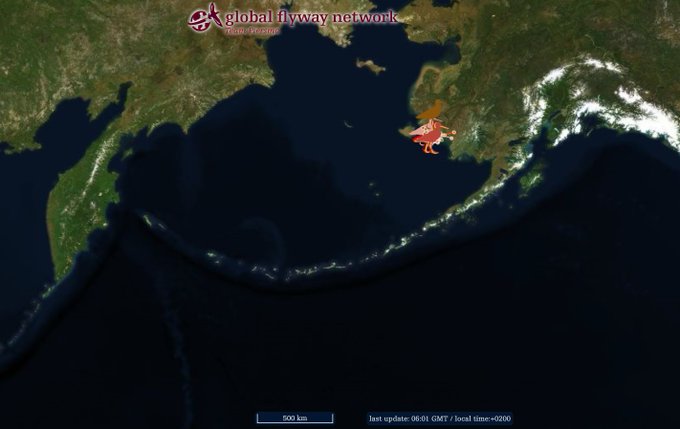Limited time offer for #NZgodwits: tailwinds more than halfway to Hawaii today!
Follow https://t.co/h0yuMmdZNa to find out whether any of the bar-tailed #godwits staging on the Kuskokwim Shoals in #Alaska will take the bite and begin the trans-Pacific migration to New Zealand...
Zoom-in, zoom-out!
The TWO SPATIAL REALITIES for bar-tailed #godwits migrating from Alaska to New Zealand. 1-Negotiating 10700 km across entire northern Pacific, hindered/facilitated by wind systems, 2-Recovering and refuelling on a reef system near Papua New Guinea.
#NZgodwits https://t.co/gsVCVJdtj7
LATEST NEWS ON TRANS-PACIFIC MIGRATION
Bar-tailed #godwit '4BBWY' has second thoughts... This is totally reasonable, as he is facing screaming headwinds south of Unimak, one of islands in Alaskan Arc, right now.
Whole saga to unfold in near real-time at: https://t.co/h0yuMmdZNa https://t.co/687EGWL1BZ
FRESHLY PUBLISHED!
Godwits is Portuguese-Frisian collection of poems by Raquel Lima, Nuno Piteira, Elmar Kuiper and Jan Kleefstra. The seed was sown during visit to Lisbon by King of the Meadows project - under guise of LF Cultural Capital in 2018. Orders: https://t.co/tlqU071uJj
More than half of the sat-tagged black-tailed #godwits breeding in Netherlands & Germany (#grutto, #Uferschnepfe) have left the countries towards south, but no #Sahara crossings yet. Breeding success has been poor in most areas. Follow them yourself at: https://t.co/baocug4ZOp
SATELLITE TRACKING is amazing tool which IS SPATIALLY UNBIASED.
Compare all historically discovered breeding sites of red #knots by fieldwork (left, compiled M.Y. Soloviev) with probable breeding sites of birds tagged by Team vanGils in #WaddenSea. 3 in known areas, 6 elsewhere!
#atmosphericornithology
Interestingly, low pressure system throbbing north of Aleutians divided arriving #NZgodwits. Tow of the five took path of least resistance south of system, but one fought headwinds north of Saint Paul. What will next 2 do? See: https://t.co/h0yuMmdZNa
The AWSG Whimbrels are progressing swiftly. Both have reached breeding ground, past the Arctic Circle! One is now only 50 km south of its nesting site in 2017 and 2018. See AWSG pages at @waderquest: https://t.co/Cf0kJhBYFC
















